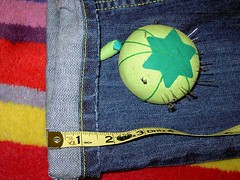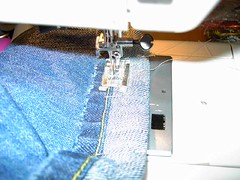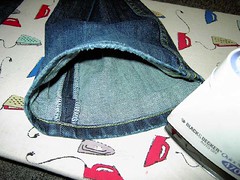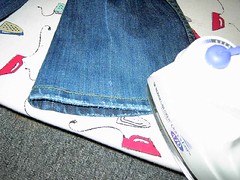Single Dad Laughing
This guy is GREAT.
Amazing Dad. Amazing writer.
Two current favorite posts...
You just broke your child. Congratulations.
and
Worthless women and the men who make them.
Friday, October 29, 2010
Friday, October 22, 2010
Follow The Money
As a parent looking for credible information on how to raise my child, I find it very irritating when most mainstream parenting media is a billboard for vaccine manufacturers and formula companies.
Look into Parenting magazine for example. Rip out every single page that advertises formula or vaccines. You won't have much magazine left.
WebMd.com Breastfeeding Guide is SPONSORED by Gerber- an infant formula manufacturer. Look at all those ads! Check out this article.
Babycenter.com ... same deal. Got an email in my inbox talking about how they can give me unbiased info about vaccine safety. Went to said article. Littered with ads from their sponsor.. "Sanofi Pastuer" a vaccine manufacturer.
And SO many more examples.
If you want unbiased info about how to take care of your child, follow the money.
Find truly unbiased resources from which to get your information.
Look into Parenting magazine for example. Rip out every single page that advertises formula or vaccines. You won't have much magazine left.
WebMd.com Breastfeeding Guide is SPONSORED by Gerber- an infant formula manufacturer. Look at all those ads! Check out this article.
Babycenter.com ... same deal. Got an email in my inbox talking about how they can give me unbiased info about vaccine safety. Went to said article. Littered with ads from their sponsor.. "Sanofi Pastuer" a vaccine manufacturer.
And SO many more examples.
If you want unbiased info about how to take care of your child, follow the money.
Find truly unbiased resources from which to get your information.
Discipline VS. Punishment
Just read an article by PhD in Parenting re:discipline. Thought I'd share it with you all because it explains in really concise terms the DIFFERENCE between discipline and punishment. There IS a difference.
Here is the whole article: My comments in red.
Here is the whole article: My comments in red.
Often when I hear people talk about their discipline style it sounds unrealistic or ineffective. I haven’t read or heard any single approach to discipline that really made perfect sense to me. There are elements of many approaches that I like and elements of others that I abhor. Rather than taking one approach and running with it, I have developed a discipline spectrum that seems to work for me most of the time.
Difference between discipline and punishment
Before I explain my spectrum, I want to be clear about the difference between discipline and punishment. Over and over again, I see people post questions on message boards or places like Yahoo! Answers asking whether it is okay to spank or whether it is okay to use time outs. Inevitably, someone will respond and say that they don’t use spankings or they don’t use time outs because they believe it is harmful to the child. This, in turn, always sparks a rash of responses from people saying how irresponsible it is to not discipline children and that those non-spanking anti-time-out people are the reason for all of the world’s problems. But what those people don’t understand is that there is a fundamental difference between discipline and punishment (see this excellent chart comparing discipline and punishment). Discipline is about teaching and guiding a child in the right direction. Punishment is about demanding compliance by exerting control over a child.
This is a huge point for me. I could never put my finger on what the true difference was. Some people's response to this will be that children should be controlled. This is a pervasive attitude in the church as well. I believe that Christ would want us to guide and encourage our children, not to control them. After all, He doesn't control us.
Finding my place on the discipline spectrum
Some experts will claim that one approach to discipline is better than all others. In my book, there is a sweet spot on the discipline spectrum that is ideal and then, depending on the situation, I may move slightly to the left or slightly to the right to use less desirable but sometimes important discipline tools.
On the right hand side of the spectrum is abuse, including physical and verbal abuse that parents may use to try to control their children. I consider it abuse to spank a child or to shame a child. On the other end of the spectrum is neglect, where the parents are indifferent and often not present and children are left to fend for themselves. Either of these approaches to discipline is obviously detrimental. But in between these two, there are many approaches and tools that parents can use.
So where is my sweet spot?
My preference (highlighted in green) is to focus in the range of modelling, choices and teaching. I think this is the area with the potential to produce the greatest benefit to the child. It gives some structure, but at the same time gives the child the tools to make wise decisions and develop competencies. It allows me to share my values and pass along things that I have learned without forcing my child to make the same choices that I did. It is, to me, what being a parent is all about.
However, I also think that there is room for some laissez-faire approach to allow the child the full range of decision making. For a child that has learned some structure through other modelling, choices, and teaching, the occasional use of the laissez faire approach gives the child room to grow and learn and can be empowering. But if it is used too often and in absence of other techniques the child can feel lost and the parents lose an opportunity to teach key values and skills to their child.
I also do use consequences and rewards selectively and punishment as a last resort (see also my post When all else fails). For me, consequences are an extension of choice. Choices obviously have consequences attached to them but sometimes even outside of choice we need to impose consequences. My preference is to use natural consequences wherever possible and if that isn’t possible, then to at least use logical consequences. I don’t like using rewards because I think it teaches the child to always expect rewards for doing anything right (brings out the greed aspect in human nature) and I also think that it takes away from the unconditional love that I am trying to show my child when I bribe him with a piece of chocolate or a new toy. That said, he is a stubborn mule sometimes and I will use rewards sparingly to convince him to do something that he is otherwise unwilling to try , but that I know he would like if only he tried it (a Bob the Builder toy was required to eventually convince him to try to poop on the toilet). Punishment is something I use as an absolute last resort in dire circumstances. If my child is in danger or putting someone else in danger and not listening or if he is purposefully defiant (e.g. hitting his sister for the fifth time after being told why it is not okay), then I may revoke privileges or remove him from the situation. When I remove him, it does often mean going to his room by himself for a few minutes while the situation resolves itself, but I always go in and talk to him and will tend towards a “time in” rather than a “time out”.
I appreciate this. ^
These other techniques that I will use sometimes are highlighted in yellow on the spectrum. I think it is important to note that the more often you use the techniques that are in the yellow zone, the more you become dependent on them (because you are losing the benefits usually realized through modelling, choices, and teaching), and the easier it is to slip into abuse or neglect.
The importance of a secure attachment
I think it is important to underscore that none of the discipline techniques discussed above will work without a secure attachment.
I think this is the most important and eye opening statement of her whole discussion. Incredible. And true.
Dr. Sears has a great article called 10 Ways Attachment Parenting Makes Discipline Easier. Essentially, having a strong and secure relationship with your child provides the foundation that is needed for other discipline techniques to work. It is often in the absence of this strong foundation that parents feel like none of their discipline techniques are working and, again, find themselves slipping further towards abuse in an attempt to control or towards neglect as they give up and sink into indifference.
This is usually what you see happen to parents who say they've tried everything and nothing succeeds. They give up and become apathetic. I'd be interested in reading more about what to do with the child who hasn't had that secure attachment from the beginning and how to heal that.
Where is your sweet spot?
Where is your sweet spot on the discipline spectrum? Why does that work for you?
Overall I think this is a great article and I love that she points us in other directions in which to read more as well. Dr. Sears' approach is definitely where I fall into step and what he says really resonates with me. As a Christian, I appreciate his use opinions knowing that he tries to raise his children in line with what the Bible teaches.
Personally, discipline has been one of those areas that I feel most challenged in. At the age of two, his strong will is coming out pretty quickly and sometimes I feel at a loss of what to do when he is having a temper tantrum. I know I've read a great article about how to deal with temper tantrums so I'll have to dig it up again.
Monday, October 18, 2010
Second time's a charm?
You'd think once you've been pregnant once, you've been through it all. I ran the gauntlet. I survived. Doing it a second time shouldn't be any different, right? Wrong.
First of all, you are pregnant with a toddler to care for. Making you one. very. tired. pregnant. person. More tired than before. Impossible? No. Doable? Strangely.
Second, urinary incontinence. Okay, so this is really the whole reason I'm writing this post. I never had more than a drip during pregnancy until my water broke the night I went into labor. I'm 25 weeks pregnant right now and have a lovely cold.
I am peeing uncontrollably. EVERY. SINGLE. TIME. I cough. What is happening? Will I ever go back to normal?! Seriously, did birthing a baby really make my vagina so weak that I can't help but pee my pants when I cough? You'd think you'd get away from pads during pregnancy but oh, the irony.
Thirdly, posterior pelvic pain. Pain in your .... @$$. Truly. It feels like sciatic nerve pain but it's not. I've been seeing a chiropractor and while its been helping, I'm still having spasms that are debilitating. Apparently its due to hormonal changes and/or weak stomach and back muscles combined with varying other factors. I know that my stomach muscles aren't so hot... I mean, how hot can they can be with 18 months between pregnancies? heh? Okay, that's a lame excuse. Really though, this is making being pregnant, not fun. I still have 15 weeks to go!
On the bright side. I've gained less weight thus far. and hopefully won't go over 25-30 lbs this pregnancy.
Also... I get to buy pink this time which makes it more enjoyable. Mommies... what are your biggest complaints about pregnancy (first, second, third..?) ? I know we're supposed to only be googly eyed and dreaming at the thought of our new babies, however, sometimes you just need to get it out.
First of all, you are pregnant with a toddler to care for. Making you one. very. tired. pregnant. person. More tired than before. Impossible? No. Doable? Strangely.
Second, urinary incontinence. Okay, so this is really the whole reason I'm writing this post. I never had more than a drip during pregnancy until my water broke the night I went into labor. I'm 25 weeks pregnant right now and have a lovely cold.
I am peeing uncontrollably. EVERY. SINGLE. TIME. I cough. What is happening? Will I ever go back to normal?! Seriously, did birthing a baby really make my vagina so weak that I can't help but pee my pants when I cough? You'd think you'd get away from pads during pregnancy but oh, the irony.
Thirdly, posterior pelvic pain. Pain in your .... @$$. Truly. It feels like sciatic nerve pain but it's not. I've been seeing a chiropractor and while its been helping, I'm still having spasms that are debilitating. Apparently its due to hormonal changes and/or weak stomach and back muscles combined with varying other factors. I know that my stomach muscles aren't so hot... I mean, how hot can they can be with 18 months between pregnancies? heh? Okay, that's a lame excuse. Really though, this is making being pregnant, not fun. I still have 15 weeks to go!
On the bright side. I've gained less weight thus far. and hopefully won't go over 25-30 lbs this pregnancy.
Also... I get to buy pink this time which makes it more enjoyable. Mommies... what are your biggest complaints about pregnancy (first, second, third..?) ? I know we're supposed to only be googly eyed and dreaming at the thought of our new babies, however, sometimes you just need to get it out.
Saturday, October 16, 2010
Independent Sleep
When you bring your baby into your bed, everyone tells you, "you're never gonna get them out of there", "that's the worst thing you can do", "you'll ruin your marriage", "you'll never get any sleep".
And while its not a bed of roses all the time, I can now say, You Are Wrong.
We decided to cosleep with Noah sort of unintentionally. I knew I wanted him near me during the first few months. The second night I was in the hospital the nurses took him for the night and I didn't sleep at all full of anxiety and agitation. Putting my baby in another room was like dragging nails across a chalkboard, it went against every single motherly instinct I had.
We slept cozily near each other with him in a cosleeper next to our bed for maybe a couple of weeks but soon I figured out how to nurse laying down and bringing him into our bed gave me a LOT more sleep and so we stayed.
Some nights, when the teething was in full swing or he was unusually hungry, I would think, maybe I should let him cry it out. Maybe I should I put him in a crib in another room. but then, when those stages passed, we slept peacefully again. The cuddles every night and morning made it completely worth it.
When we decided to night wean around 15 months (when I was working nights), co-sleeping made the transition much easier. He had a difficult time with me not being there but he had daddy right next to him and knew that he was safe in our bed.
When we found out we were pregnant, I started to dread trying to figure out how to move him to his own room. People automatically started asking the questions about when and where we were going to move him etc etc. I kind of ignored it and trusted that we would figure it out.
Things happened so naturally. He weaned himself at 20 months due to the pregnancy and I didn't have to pressure him towards that step. We moved our bed into another room and gave him his own. He knew it was his bed and although he didn't sleep in it, he knew it was his. I started rocking him to sleep in his room and letting him nap there. If he wanted to nap in our bed, I let him. Then we started putting him down in his bed at night and again, if he wanted to be in our bed, we let him.
Last night he slept all night in his toddler bed without waking up. No cry it out needed. I am so happy that I didn't go against my instincts and force him to sleep alone. If he asks to come into our bed from now on, I will let him knowing that sleep is developmental. Transitions to independence happen most smoothly from a healthy attached and trusting relationship.
I'm sure if he was a different child with a different personality, things would have happened differently. We may have been tandem nursing in a few months. He might have needed to sleep with us longer. He may have slept better in his own bed from the beginning. Regardless, I know that children ask for what they need. Their tears signal their needs. Trying to prevent them and work through them is not spoiling them, it's listening to them.
Taking the time to slow down enough and give our kids our attention and love isn't only what they deserve but what they actually NEED to grow emotionally.
For more info on safe cosleeping and sleep development see:
http://www.nd.edu/~jmckenn1/lab/safe.html
http://m0dernmama.blogspot.com/p/co-sleeping_15.html
And while its not a bed of roses all the time, I can now say, You Are Wrong.
We decided to cosleep with Noah sort of unintentionally. I knew I wanted him near me during the first few months. The second night I was in the hospital the nurses took him for the night and I didn't sleep at all full of anxiety and agitation. Putting my baby in another room was like dragging nails across a chalkboard, it went against every single motherly instinct I had.
We slept cozily near each other with him in a cosleeper next to our bed for maybe a couple of weeks but soon I figured out how to nurse laying down and bringing him into our bed gave me a LOT more sleep and so we stayed.
Some nights, when the teething was in full swing or he was unusually hungry, I would think, maybe I should let him cry it out. Maybe I should I put him in a crib in another room. but then, when those stages passed, we slept peacefully again. The cuddles every night and morning made it completely worth it.
When we decided to night wean around 15 months (when I was working nights), co-sleeping made the transition much easier. He had a difficult time with me not being there but he had daddy right next to him and knew that he was safe in our bed.
When we found out we were pregnant, I started to dread trying to figure out how to move him to his own room. People automatically started asking the questions about when and where we were going to move him etc etc. I kind of ignored it and trusted that we would figure it out.
Things happened so naturally. He weaned himself at 20 months due to the pregnancy and I didn't have to pressure him towards that step. We moved our bed into another room and gave him his own. He knew it was his bed and although he didn't sleep in it, he knew it was his. I started rocking him to sleep in his room and letting him nap there. If he wanted to nap in our bed, I let him. Then we started putting him down in his bed at night and again, if he wanted to be in our bed, we let him.
Last night he slept all night in his toddler bed without waking up. No cry it out needed. I am so happy that I didn't go against my instincts and force him to sleep alone. If he asks to come into our bed from now on, I will let him knowing that sleep is developmental. Transitions to independence happen most smoothly from a healthy attached and trusting relationship.
I'm sure if he was a different child with a different personality, things would have happened differently. We may have been tandem nursing in a few months. He might have needed to sleep with us longer. He may have slept better in his own bed from the beginning. Regardless, I know that children ask for what they need. Their tears signal their needs. Trying to prevent them and work through them is not spoiling them, it's listening to them.
Taking the time to slow down enough and give our kids our attention and love isn't only what they deserve but what they actually NEED to grow emotionally.
For more info on safe cosleeping and sleep development see:
http://www.nd.edu/~jmckenn1/lab/safe.html
http://m0dernmama.blogspot.com/p/co-sleeping_15.html
Monday, October 4, 2010
Lonely//!
For other mama friends.......... or just best friends. Either or.
We are all too busy or too far away. It's getting old.
Sometimes you JUST need a girlfriend to talk to and laugh about ridiculous things or share your absolute deepest fears with.
My midwives probably think I'm crazy because at my monthly appointments, I just about talk their ears off. Do I look that desperate? heh. Maybe they'll be my friend even after delivery. ...... (hahaa...)
It'll be nice when this little baby girl is all grown up and we are friends. I don't mind waiting 20 years. Having the love and friendship of your children would be the ultimate blessing. It is scary to imagine your kids hating you or wanting nothing to do with you. I would certainly love them more than the whole entire world but we all know about unrequited love. Maybe that's how God feels when we disregard Him entirely.
Its easy to forget that He's a friend too... not just an authority. I'm so appreciative of the friends He has given me and how he shows His love for me through them. Swallowing the loneliness of life can be difficult but focusing on the light and sweet reunions with old friends and making of new ones can make it a little bit easier.
"He heals the brokenhearted and binds up their wounds...." Psalm 147:3
a verse thats been on my heart all week....
We are all too busy or too far away. It's getting old.
Sometimes you JUST need a girlfriend to talk to and laugh about ridiculous things or share your absolute deepest fears with.
My midwives probably think I'm crazy because at my monthly appointments, I just about talk their ears off. Do I look that desperate? heh. Maybe they'll be my friend even after delivery. ...... (hahaa...)
It'll be nice when this little baby girl is all grown up and we are friends. I don't mind waiting 20 years. Having the love and friendship of your children would be the ultimate blessing. It is scary to imagine your kids hating you or wanting nothing to do with you. I would certainly love them more than the whole entire world but we all know about unrequited love. Maybe that's how God feels when we disregard Him entirely.
Its easy to forget that He's a friend too... not just an authority. I'm so appreciative of the friends He has given me and how he shows His love for me through them. Swallowing the loneliness of life can be difficult but focusing on the light and sweet reunions with old friends and making of new ones can make it a little bit easier.
"He heals the brokenhearted and binds up their wounds...." Psalm 147:3
a verse thats been on my heart all week....
How to hem jeans
I found this link while attempting to do my first hem on a pair of jeans (on sale at Gap Maternity...8L... much too long).
How to Hem Jeans
I'm quoting the tutorial here as well... This is an easy way to make a perfect hem... it looks great and the few mistakes I made were because I've only sewn like ten things in my entire life...
As follows...
"

I found this fabulously perfect way to hem jeans on the Cavaricci site, which has since been taken down, so here’s the lowdown. This method keeps the original hem in tact and is especially helpful now that all jeans are made to be 34 inches long for mammoth supermodels. Plus, it took less than 30 minutes.
A couple notes: It’s best to do one leg at a time, so as not to have too much undoing to do in case something goes awry. Also, it’s good to know the length that you want each leg to be. Sometimes, one leg will be a bit shorter or longer than the other before you hem.
Step 1: Decide how much length you would like to take off. Divide that number in half. (Hems should fall just below the bottom of your ankle. Also, if you generally wear high heels, or a certain height of heel, you might want your hem a bit longer – it should fall an inch to a half inch above the floor at your heel.)

Step 2: Cuff the jeans. I wanted to take two inches off my hem, so I measured one inch out from the original hem line and pinned. (Do not include the distance from the hem to the end of the jean in your calculations.)

Step 3: Pin around the rest of the cuff, taking care to measure each time you pin.

Mind the seams while you’re pinning. Make sure that the stitching lines up at each seam.

Step 4: It’s time to stitch. You want to place your needle and continue sewing right next to the original hem. Stitch on the right side of the hem, or the side farthest from the bottom of the jean. Sew all the way around the cuff. Be sure you don’t sew through both front and back sides of the jeans (making it so that the foot hole is sewn shut)!

You can either cut the excess off, leaving about a half inch for fraying, or iron the extra material in.

Turn the leg right side out and press the new seam flat, revealing the old hem.

Voila! No more slouchy, unflattering leg.
Updates: I’m glad everyone has found this tutorial useful. I wanted to answer some questions here that continue to arise. If you are still having trouble, just leave a comment; I usually respond within a few days.
1) Yes, this trick works just as well with jean skirts, good point!
2) If you have already cut your hem off and still have it, no worries. You can still follow these directions. After you have decided on a length, do not divide in half as Step 1 suggests. Move on to Step 2. You will essentially be reattaching the original hem in this step. Pin the stiched line at your desired length (for instance, if you want your jeans to be 30 inches long, measure 30 inches from the inseam and pin the disconnected hem to that length on the jean leg, right sides together) and follow the steps from here. If you have already thrown away the hem I am sorry to say you’ll have to try and recreate the look from scratch.
3) If the jeans leg is flared, cut off the hem about an inch above the stitched hemline. Measure the circumference of the hem. Then, measure the circumference of the jean and the desired length you’re hemming it. Open the side seam of the jean several inches above where you want the jean to be hemmed. Take in the jean to the same circumference as the hem. You’ll want to make this look gradual. Reattach the hem portion following the directions in No. 2 above. I wouldn’t recommend using this method if the jean leg is more than an 1 1/2″ larger than the circumference of the hem.
4) This method can easily be done without a sewing machine. Follow the directions, just use your hands, needle, and thread.
5) If you are having trouble sewing over the seam with your machine, try a thicker needle. If this fails, you can always sew up to each side the seam (be sure to backstitch) and sew over the seam by hand. It works just as well. Also, a zipper foot may help.
6) I hang dry my jeans and tuck the excess fabric at the bottom up before hanging them, so I don’t need to iron the bottom flap each time. Alternatives to this, would be to use some Stichwitchery (a bonding, iron-on product) to adhere the excess material to the inside of the jean. Or, you could cut the excess off to 1/2 an inch and apply Fray-Chek a glue that keeps the material from unraveling.
Thanks for stopping by and happy hemming! -Dacia"
How to Hem Jeans
I'm quoting the tutorial here as well... This is an easy way to make a perfect hem... it looks great and the few mistakes I made were because I've only sewn like ten things in my entire life...
As follows...
"

I found this fabulously perfect way to hem jeans on the Cavaricci site, which has since been taken down, so here’s the lowdown. This method keeps the original hem in tact and is especially helpful now that all jeans are made to be 34 inches long for mammoth supermodels. Plus, it took less than 30 minutes.
A couple notes: It’s best to do one leg at a time, so as not to have too much undoing to do in case something goes awry. Also, it’s good to know the length that you want each leg to be. Sometimes, one leg will be a bit shorter or longer than the other before you hem.
Step 1: Decide how much length you would like to take off. Divide that number in half. (Hems should fall just below the bottom of your ankle. Also, if you generally wear high heels, or a certain height of heel, you might want your hem a bit longer – it should fall an inch to a half inch above the floor at your heel.)

Step 2: Cuff the jeans. I wanted to take two inches off my hem, so I measured one inch out from the original hem line and pinned. (Do not include the distance from the hem to the end of the jean in your calculations.)

Step 3: Pin around the rest of the cuff, taking care to measure each time you pin.

Mind the seams while you’re pinning. Make sure that the stitching lines up at each seam.

Step 4: It’s time to stitch. You want to place your needle and continue sewing right next to the original hem. Stitch on the right side of the hem, or the side farthest from the bottom of the jean. Sew all the way around the cuff. Be sure you don’t sew through both front and back sides of the jeans (making it so that the foot hole is sewn shut)!

You can either cut the excess off, leaving about a half inch for fraying, or iron the extra material in.

Turn the leg right side out and press the new seam flat, revealing the old hem.

Voila! No more slouchy, unflattering leg.
Updates: I’m glad everyone has found this tutorial useful. I wanted to answer some questions here that continue to arise. If you are still having trouble, just leave a comment; I usually respond within a few days.
1) Yes, this trick works just as well with jean skirts, good point!
2) If you have already cut your hem off and still have it, no worries. You can still follow these directions. After you have decided on a length, do not divide in half as Step 1 suggests. Move on to Step 2. You will essentially be reattaching the original hem in this step. Pin the stiched line at your desired length (for instance, if you want your jeans to be 30 inches long, measure 30 inches from the inseam and pin the disconnected hem to that length on the jean leg, right sides together) and follow the steps from here. If you have already thrown away the hem I am sorry to say you’ll have to try and recreate the look from scratch.
3) If the jeans leg is flared, cut off the hem about an inch above the stitched hemline. Measure the circumference of the hem. Then, measure the circumference of the jean and the desired length you’re hemming it. Open the side seam of the jean several inches above where you want the jean to be hemmed. Take in the jean to the same circumference as the hem. You’ll want to make this look gradual. Reattach the hem portion following the directions in No. 2 above. I wouldn’t recommend using this method if the jean leg is more than an 1 1/2″ larger than the circumference of the hem.
4) This method can easily be done without a sewing machine. Follow the directions, just use your hands, needle, and thread.
5) If you are having trouble sewing over the seam with your machine, try a thicker needle. If this fails, you can always sew up to each side the seam (be sure to backstitch) and sew over the seam by hand. It works just as well. Also, a zipper foot may help.
6) I hang dry my jeans and tuck the excess fabric at the bottom up before hanging them, so I don’t need to iron the bottom flap each time. Alternatives to this, would be to use some Stichwitchery (a bonding, iron-on product) to adhere the excess material to the inside of the jean. Or, you could cut the excess off to 1/2 an inch and apply Fray-Chek a glue that keeps the material from unraveling.
Thanks for stopping by and happy hemming! -Dacia"
Subscribe to:
Posts (Atom)


